Indian Paintings
Sadanga of Indian painting
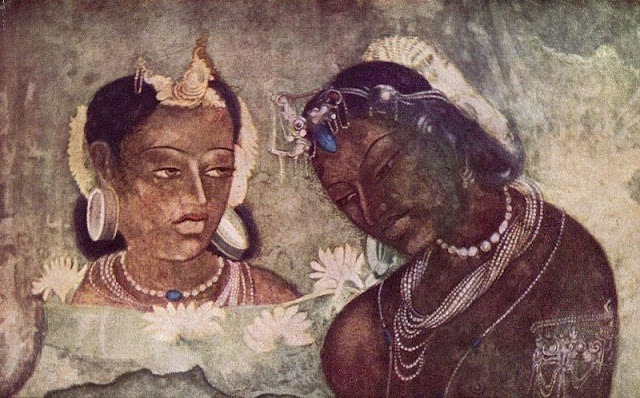 Around 1st century BC six Limbs of Indian Painting, were evolved, laying down the main principles of the art. Shadang or the six limbs of Indian Art find their 1st mention in Vatsyayana’s Kama Sutra around 3rd century AD. Vishnudharmottara purana (700 A.D.) – Contains Chitrasutra which describes the six organs of painting. The six different limbs were actually six different points or
Around 1st century BC six Limbs of Indian Painting, were evolved, laying down the main principles of the art. Shadang or the six limbs of Indian Art find their 1st mention in Vatsyayana’s Kama Sutra around 3rd century AD. Vishnudharmottara purana (700 A.D.) – Contains Chitrasutra which describes the six organs of painting. The six different limbs were actually six different points or
The subsequent development of painting by the Buddhists indicates that these ‘ Six Limbs ‘ were put into practice by Indian artists, and are the basic principles on which their art was founded
Prehistoric Cave Paintings
- Painted rock shelters by prehistoric cave dwellers
- Reflects primitive records of wild animals, birds & marine creatures
- Depicts human images, dancing images and hunting scenes.
- Notable example → Bhimbetka caves in the Kaimur Range, MP (biggest prehistoric art depositoryin India)
- Bhimbetka caves were discovered in 1958 by V.S. Wakanker
Genres of Indian Painting
- Indian paintings can be broadly classified as murals and miniatures.
- Murals are large works executed on the walls of solid structures directly, as in the Ajanta Caves & Kailash temple (Ellora)
- Miniature paintings are executed on a very small scale for books or albums on perishable material such as paper and cloth.
Mural Paintings
- Mural is inherently different from all other forms of pictorial art & is organically connected with architecture.
- Mural is the only form of painting that is truly three-dimensional, since it modifies and partakes of a given space.
- Mural paintings are applied on dry wall with the major use of egg, yolk, oil, etc.
- A mural artist must conceive pictorially a theme on the appropriate scale with reference to the structural exigencies of the wall & to the idea expressed.
- The history of Indian murals starts in ancient & early medieval times, from 2nd century BC to 8th – 10th century AD.
- Notable examples → Ajanta Caves, Bagh Caves, Sittanavasal Caves, Armamalai Cave (Tamil Nadu), Kailasa temple (Ellora Caves)
- Murals from this period depict mainly religious themes of Buddhist, Jain and Hindu
Ajanta Murals Paintings
- Depict a large number of incidents from the life of the Buddha (Jataka Tales)
- Exclusively Buddhist, excepting decorative patterns on the ceilings and the pillars.
- Prominent feature → Half closed drooping eyes
Ellora Murals Paintings
- Painted in rectangular panels with thick borders with following
- Prominent features → Sharp twist of the head + painted angular bents of the arms + sharp projected nose + long drawn open eyes + concave curve of the close limbs
Badami Mural Paintings
- A cave site in Karnataka, patronized by chalukya king, Manglesha
- Depictions in the caves show Vaishnava affiliation, Therefore, the cave is popularly known as Vishnu cave.
- Only a fragment of painting has survived on the vaulted roof of the front mandapa
- Badami cave painting represents an extension of the tradition of mural painting from Ajanta to Badami in south India
- It is noteworthy to observe that the contours of different parts of the face of the face create protruding structures of face
Murals under the Pallava, Pandava and Cholas
- Paintings at the Kanchipuram temple were patronised by Pallava king, Rajsimha
- Paintings at Tirumalaipuram caves & Jaina caves at Sittanvasal were patronised by Padayas
- Paintings at Nartamalai & Brihadeswara temple were patronized by Cholas
- Prominent feature of Cholas art → wide open eyes
- Notable Cholas art example → Dancing girl from Brihadeshwara temple of Tanjore
Vijayanagara murals (13th century)
- Paintings at Virupaksha temple (Hamphi) & Lepakshi temple (Andhra Pradesh) were patronised by Vijayanagara Kings
Miniature Paintings
- The Palas of Bengal were the pioneers of miniature painting in India.
- The art of miniature painting reached its glory during the Mughal period.
- The tradition of miniature paintings was carried forward by the painters of different Rajasthani schools of painting like the Bundi, Kishangarh, Jaipur, Marwar & Mewar.
- The Ragamala paintings also belong to this school, as does the Company painting produced for British clients under the British Raj.
The Pala School (11th - 12th century)
- Earliest examples of miniature painting in India
- Exist in the form of illustrations to the religious texts on Buddhism executed under the Palas of the eastern India & the Jain texts executed in western India
- The Buddhist monasteries of Nalanda, Odantapuri, Vikramsila & Somarupa were great centers of Buddhist learning and art.
- A large number of manuscripts on palm-leaf relating to the Buddhist themes were written, illustrated with the images of Buddhist deities at these centers
- The Pala painting is characterized by sinuous line and subdued tones of colour
- Pala paintings resemble the ideal forms of contemporary bronze and stone sculpture
- Represents a naturalistic style which reflects a feeling of the classical Ajanta art
Western Indian School of Painting
- Also called Jaina Painting, largely devoted to the illustration of Jaina religious texts of the 12th–16th century
- Notable sites → Gujrat, Uttar Pradesh, Central India & Orissa
- Characterized by simple, bright colours, highly conventionalized figures, and wiry, angular drawing
- The naturalism of early Indian wall painting is entirely absent.
- The earliest manuscripts are on palm leaves with the figures shown from a frontal view
- The facial type, with its pointed nose, resembles to wall paintings at Ellora
- Prominent feature → Projecting “further eye,” which extends beyond the outline of the face in profile
Mughal Paintings (16th – 19th century)
- Mainly confined to miniature illustrations on the books or as single works to be kept in an album
- Mughal paintings were a unique blend of Indian, Persian (Safavi) and Islamic styles
- Marked by supple naturalism → Primarily aristocratic and secular
- Tried to paint the classical ragas and Seasons or baramasa
- Tuti-nama - first art work of the Mughal School.
- Akbar’s reign (1556–1605) ushered a new era in Indian miniature painting.
- At Zenith under Jahangir who himself was a famous painter
- Jahangir encouraged artists to paint portraits and durbar scenes.
- Shah Jahan (1627–1658) continued the patronage of painting.
- Aurangzeb had no taste for fine arts.
Akbar was the first monarch to establish an atelier in India under the supervision of two Persian master artists, Mir Sayyed Ali & Abdus Samad. More than a hundred painters were employed, most of whom were Hindus from Gujarat, Gwalior and Kashmir, who gave a birth to a new school of painting, popularly known as the Mughal School of miniature Paintings.
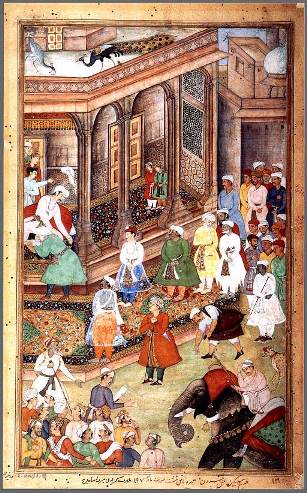

- Most significant are Hamza Nama, Razm-Nama or “The Book of War”, Akbar Nama
- Finest example of this school includes Hamzanama series, started in 1567 & completed in 1582
- Hamzanama → Stories of Amir Hamza, illustrated by Mir Sayyid Ali
- 1200 paintings on themes of Changeznama, Zafarnama & Ramayana
- The paintings of the Hamzanama are of large size, 20” x 27″ and were painted on cloth.
- They are in the Persian safavi style with dominating colours being red, blue and green
- Indian tones appear in later work, when Indian artists were employed
Rajput Painting (16th – 19th century)
- the art of the independent Hindu feudal states in India
- Unlike Mughal paintings which were contemporary in style, Rajput paintings were traditional & romantic
- Rajput painting is further divided into Rajasthani painting and Pahari painting (art of the Himalayan kingdoms)
Central Indian and Rajasthani Schools (17th – 19th Century)
- Deeply rooted in the Indian traditions, taking inspiration from Indian epics, Puranas, love poems & Indian folk-lore
- Mughal artists of inferior merit who were no longer required by the Mughal Emperors, migrated to Rajasthan
- Rajasthani style prominent features → bold drawing, strong and contrasting colours
- Treatment of figures is flat without any attempt to show perspective in a naturalistic manner
- Surface of the painting is divided into several compartments of different colours in order to separate one scene from another.
Malwa paintings (17th century)
- Centred largely in Malwa and Bundelkhand (MP); sometimes referred as Central Indian painting due to its geographical distribution.
- Prominent features → flat compositions, black and chocolate-brown backgrounds, figures shown against a solid colour patch and architecture painted in lively colour.
- This school’s most appealing features is its primitive charm & a simple childlike vision
Kishangarh paintings (18th century)
- Distinguished by its individualistic facial type and its religious intensity
- Developed under the patronage of Raja Savant Singh (1748-1757 AD) by master artist Nihal Chand
- Men and women are drawn with pointed noses and chins, deeply curved eyes, and serpentine locks of hair
- Their action is frequently shown to occur in large panoramic landscapes
Mewar (Udaipur) Paintings (17th – 18th century)
- Characterized by bold bright contrasting colours and direct emotional appeal
- The earliest-dated examples come from Ragmala (musical modes) series painted in 1605
- Reflects portraiture & life of the ruler, along with religious themes
- text of the painting is written in black on the top against the yellow ground.
Marwar (Jodhpur) Paintings
- Executed in a primitive and vigorous folk style
- Completely uninfluenced by the Mughal style.
- Portrays court scenes, series of Ragamala & Baramasa
Bundi paintings (Late 17th century)
- Very close to the Mewar style, but the former excels the latter in quality
- Prominent features → Rich and glowing colours, the rising sun in golden colour, crimson-red horizon, border in brilliant red colour (in Rasikpriya series)
- Notable examples → Bhairavi Ragini (Allahabad Museum), illustrated manuscript of the Bhagawata Purana (Kota Museum) & a series of the Rasikapriya (National Museum, Delhi)
Kota paintings (18th – 19th century)
- Very similar to Bundi style of paintings
- Themes of tiger and bear hunt were popular
- Most of the space in painting is occupied by the hilly jungle
The Pahari Schools (17th – 19th Century)
Comprises the present State of Himachal Pradesh, some adjoining areas of the Punjab, the area of Jammu, & Garhwal in Uttarakhand
Basohli Paintings (17th – 18th century)
- known for its bold vitality of colour, lines & red borders
- Emotional scenes from a text called “Rasamanjari” → Krishna legend
- Favoured oblong format, with the picture space usually delineated by architectural detail, which often breaks into the characteristic red borders
- Stylized facial type, shown in profile, is dominated by the large, intense eyes
- Colours are always brilliant, with ochre yellow, brown, and green grounds predominating
- Plain monochrome background with facial type became a little heavier& tree forms acquiring somewhat naturalistic character
- Depicted jewelry by thick, raised drops of white paint, with particles of green beetles wings to represent emeralds
Guler painting (Jammu)
- Mainly consisting of portraits of Raja Balwant Singh of Jasrota (Jammu) designed by Nainsukh
- Colours used are soft and cool unlike Basohli school
- Style appears to have been inspired by the naturalistic style of the Mughal painting
Kangra painting (Late 18th century)
- The Kangra style is developed out of the Guler style & possesses its main characteristics, like the delicacy of drawing & naturalism
- The Kangra style continued to flourish at various places namely Kangra, GuIer, Basohli, Chamba, Jammu, Nurpur and Garhwal etc.
- However, Named as Kangra style as they are identical in style to the portraits of Raja Sansar Chand of Kangra
- In these paintings, the faces of women in profile have the nose almost in line with the forehead, the eyes are long & narrow, & chin is sharp.
- There is, however, no modelling of figures and hair is treated as a flat mass.
- Paintings of the Kangra style are attributed mainly to the Nainsukh family.
Kullu – Mandi painting
- A folk style of painting in the Kulu-Mandi area, mainly inspired by the local tradition
- The style is marked by bold drawing and the use of dark and dull colours
Independent Paintings
Kalighat Paintings (Kolkata – 19th century)
- Patua painters from rural Bengal came and settled in Kalighat to make images of gods and goddesses in the early 19th century
- They evolved a quick method of painting on mill-made paper
- Used brush and ink from the lampblack
- Depicts figures of deities, gentry & ordinary people
- Reflects romantic depictions of women
- Kalighat paintings are often referred to as the first works of art that came from Bengal
Madhubani Paintings (Mithila – Bihar)
- Colorful auspicious images on the interior walls of homes on the occasion of rituals & festivity → painted by women
- This ancient tradition, especially elaborated for marriages, continues today.
- Used to paint the walls of room, known as KOHBAR GHAR in which the newly wedded couple meets for the first time
- Very conceptual, first, the painter thinks & then “draws her thought”
- Has five distinctive styles – Bharni, Katchni, Tantrik, Godna and Gobar
- Bharni, Kachni and Tantrik style were mainly done Brahman & Kayashth women, who are upper caste women in India and Nepal
- Godna & Gobar style is done by the Dalit & Dushadh communities
Phad paintings (Bhilwada, Rajasthan)
- Phad is a painted scroll, which depicts stories of epic dimensions about local deities and legendary heroes.
- Bhopas (local priests) carry these scrolls on their shoulders from village to village for a performance
- Represents the moving shrine of the deity and is an object of worship
- Most popular & largest Phad – local deities Devnarayanji and Pabuji
Kalamkari Paintings (Andhra Pradesh)
- Literal meaning is painting done by kalam (pen) , Mainly in Andhra Pradesh (developed under Vijaynagar rulers)
- Stories from the epics Ramayana, Mahabharata and the Puranas are painted as continuous narratives
- Mainly to decorate temple interiors with painted cloth panels scene after scene; Every scene is surrounded by floral decorative patterns
- The artists use a bamboo or date palm stick pointed at one end with a bundle of fine hair attached to the other end to serve as brush or pen.
- Relevant Telugu verses explaining the theme are also carried below the artwork.
- Cloths are painted with the colours obtained from vegetable and mineral sources.
- Gods are painted blue, the demons and evil characters in red and green.
- Yellow is used for female figures and ornaments.
- Red is mostly used as a background
Warli painting
- Practiced in tribal regions of Maharashtra with subjects, predominantly religious
- decorative paintings on floors & walls of ‘gond’ and ‘kol’ tribes homes and places of worship
- made in a geometric patterns like squares, triangles, and circles
- Unlike other tribal art forms, Warli paintings do not employ religious iconography and is a more secular art form
Decorative Art
- On walls of homes viz. Rangoli or decorative designs on floor mainly on auspicious occasions
- Usually rice powder is used for these paintings but colored powder or flower petals are also used to make them more colorful.
Kolam
- A ritualistic design drawn at the threshold of households and temples.
- Drawn everyday at dawn and dusk by women in South India
- Kolam marks festivals, seasons and important events in a woman’s life such as birth, first menstruation and marriage.
- Kolam is a free-hand drawing with symmetrical and neat geometrical patterns.
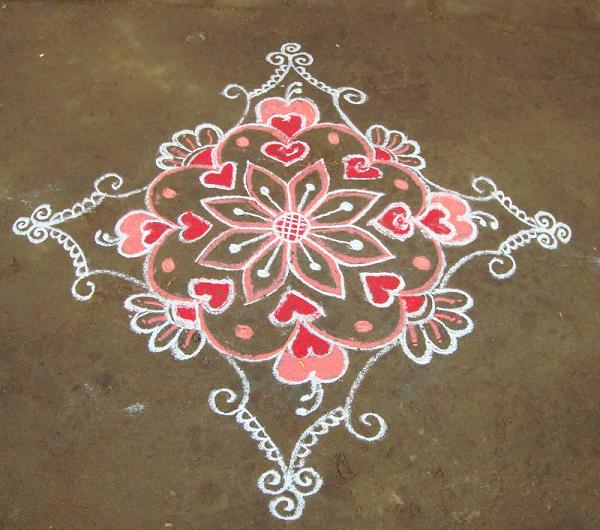

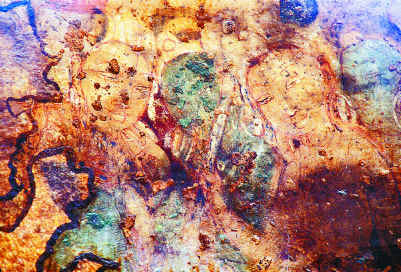
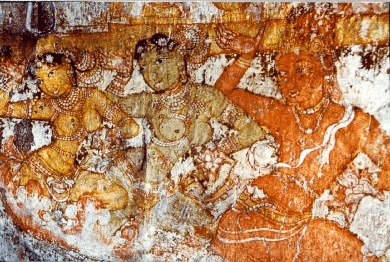
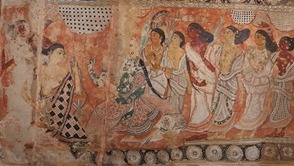
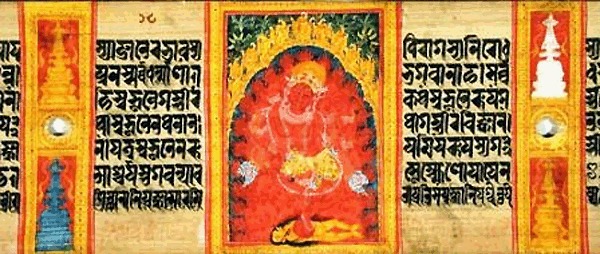
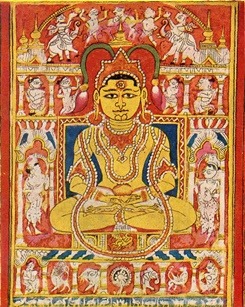
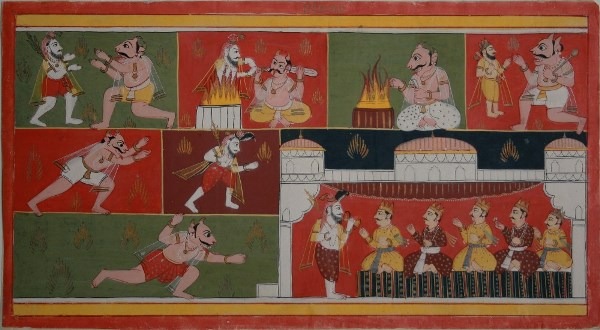
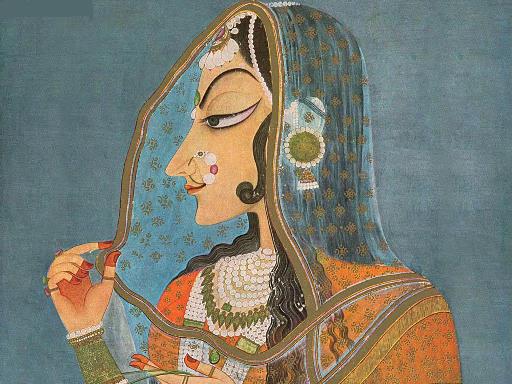
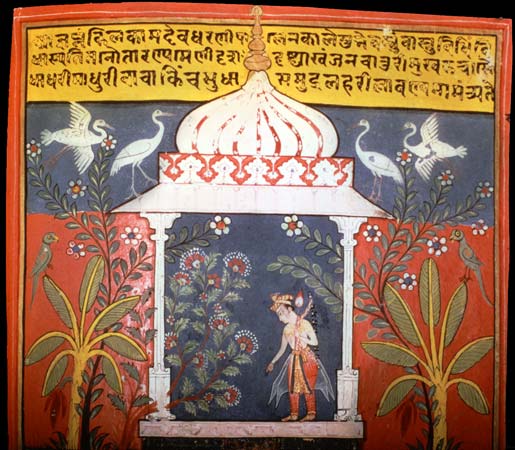

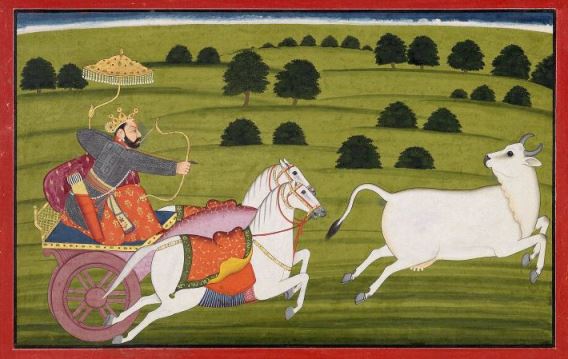
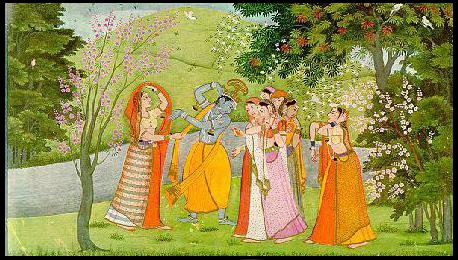

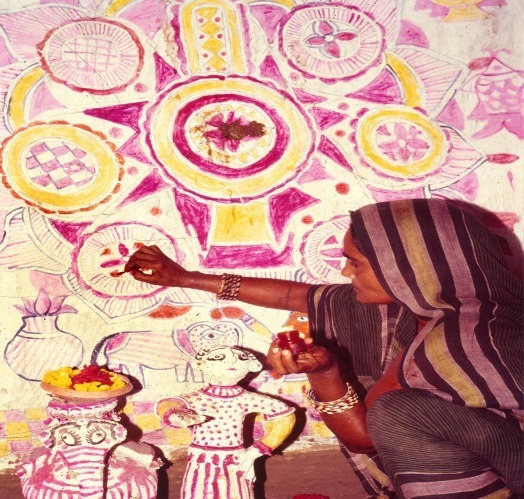
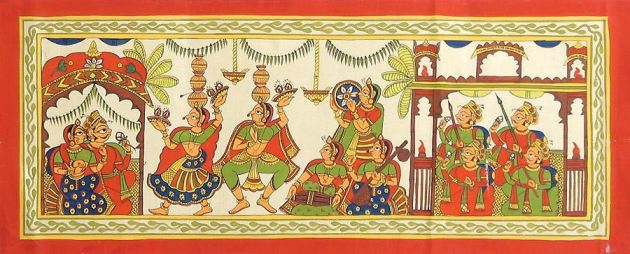

No comments:
Post a Comment